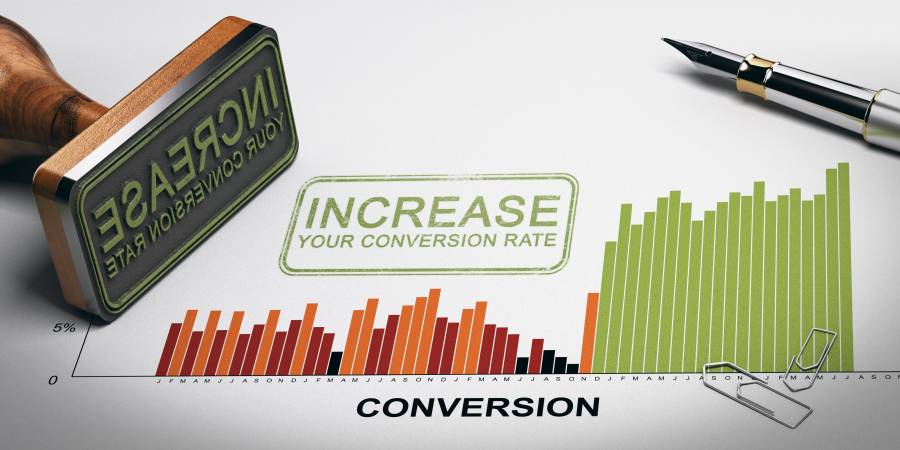
- Produtos
- Precos
- Empresa
- Casos de Sucesso
- Programa do revendedor
How to write Amazon product description that converts?
Unlike traditional concept of the Search Engine Optimization (SEO), optimizing content for your Amazon product description will require its own specific set of writing creativity and SEO skills. Why? Simply because considering that Amazon is a really restrictive ecommerce platform, it’s nearly impossible to succeed over there as a top performing seller – unless you’re well-prepared to craft every content section of your product listing in strict compliance with the major rules and guidelines for Amazon SEO. Otherwise, you will never benefit from having a well-optimized Amazon product description that really converts into a vast number of successful deals fulfilled on that world’s top popular online marketplace. That’s why below I’m going to give you some useful information backed with the basic set of practical recommendations for you to craft a truly compelling product listing that ranks well in the relevant list of the SERPs over there. So, let’s see how to complete the task with ecommerce content SEO in its best way.

Pay Enough Attention to the Main Rules of the Game
Before anything else, let me start with a short word of caution. The thing is that when it comes to a product-oriented content SEO, there is much more different about copywriting for Amazon than you may think. Let’s face it – with a truly unrivaled collection of many different rules and regulations pulled together within its TOS (Terms of Service), Amazon online marketplace is probably one of the most nit-picky selling platforms I’ve ever come across so far. I mean the situation when there is too much stuff to be followed by every big-time seller, in line with a lot of other things about content SEO that are simply not allowed to be seen either in your Amazon product description itself, or elsewhere throughout the rest of your listing (e.g. Product Title, List of Bullets, as well as its ending section embedded with the Backend Search Terms).
While aggressive violators or just a bit unscrupulous sellers can avoid any problems for some time, when Amazon takes action – everything usually ends up with a lot of heavy consequences, which have a strong negative potential in terms of ranking down the list of the relevant SERPs over there. I mean those worst-case scenarios fully capable of getting your product page imposed with a temporary/permanent delisting, or having Amazon seller accounts under suspension. What’s more – it might as well come to extremes when everything ends up with a seller account ban, in certain circumstances accompanied with a total and often irreversible loss of all those hard-earned seller privileges.

Now, What?
Recognizing the importance of Amazon SEO guidelines and the major recommendations listed within the Seller Central account, let’s finally get down to the matter. So, the question is – what’s the best way of optimizing Amazon product description, title, list of bullets, and backend section with seller search terms? It may seem to be a rather straightforward process for most of us, but here we’re entering a definitely delicate junction. I mean that despite the fact that there is a lot of different guides about ecommerce content optimization and Amazon SEO itself, however, the information available in open access too often proves to be outdated or even conflicting with Amazon’s Seller Central dashboard. But no need to worry – here is a brief practical guide made up with my own seller experience to help you with Amazon content optimization that will never fail. Consider the following suggestions and rather simple ideas to navigate the complexities of listing copy optimization on Amazon. So, let’s finally delve in.
Content SEO for Amazon Product Description, Title, and Bullets
It may seem like a no-brainer, but unlike the major search engines (like Google itself), every area covered with Amazon’s A9 ranking algorithm is found directly on its official website and nowhere else. As there isn’t such thing as off-page SEO on Amazon, right? So, luckily we can forget about those time-consuming and labor-intensive works usually needed for quality link building, crafting a stronger online presence in social media, handling local SEO optimization, and so on. Simply because all these elements have zero effect on how well your product listing ranks on Amazon online marketplace. That’s why there are not too many things used by the A9 algorithm when it comes to awarding sales ranking position to every given item seen on sale over there.

And here is the set pulling together all major elements of ecommerce SEO that does matter for Amazon:
- Seller account quality, commonly measured with the average number of violations, suspensions, complaints, and so on.
- Your previous, as well as the most recent sales history with the average level of in-stock inventories, maintained so far.
- A general level of conversion and bounce rate taken at scale for the average number of potential clients from the relevant search results who clicked on your listing but still left without being converted into the real buyers.
- Content quality and the right way of optimization for your Amazon product description, product title, key features/benefits (list of bullet points), as well as the backend section embedded with the rest of main seller search terms.
Considering that content SEO is among the primary ranking factors on Amazon, it becomes clear that your product listing itself also provides a measurable foundation for your conversion-generating potential in its own way. So, it’s time to have a quick run through the main areas of your content SEO that really converts. Here is what needs your precise attention, first and foremost (listed in the order of their decreasing importance).
Product Title
The very initial section of your product page is apparently among the most vital elements of Amazon content SEO optimization. That’s why your product title is probably the most fitting place for you to drop only best of your top performing keywords or must-winning search terms and their long-tail combinations. Remember, your most valuable keyword assets should be placed closer to the title beginning so that they will have the maximum weight in terms of relevance.

Amazon Product Description
Some SEOs and even big-time ecommerce sellers believe that Amazon product description isn’t meant to be always indexed for product-oriented search over there. But they are terribly wrong. The thing is that it doesn’t necessarily mean that you might as well have no potentially profitable keywords included to your Amazon product description. Not at all! Of course, there is no need to go for extremes, for example getting this section of your product listing literally jam-packed with as many main target search terms as possible. But I still believe that every seller’s Amazon product description is still worth dropping at least a couple of must-winning keywords – just to be sure I’m making the maximum out of my ranking and conversion-generating potential.
List of Bullet Points
All about your list of bullets is nearly-self explanatory. I mean that Amazon is also indexing the key product benefits and features mentioned in this section. So, having a measurable part of your must-winning keywords and the rest of profitable long-tail search terms would be fine for you under any circumstances. Doing so, you will improve general search placement of your product listing even to a much higher degree.

Amazon Product Description which Really Converts
Let’s face it – with Amazon having something around 450 million items listed on sale, probably the only way of taking the lead over such a massive product selection is to be different. Seriously, who can imagine the live shoppers ending up with product analysis – just comparing every given item they want to buy one after another, right? That’s why showing the strongest sides of your product, highlighting what makes it really unique, and showcasing why it’s definitely better than the other similar items offered for sale on that already seriously overcrowded online marketplace – is the right way for you to start moving towards your total niche domination as the leading seller always seen prominently displayed in relevant search. So, here is what should be done to engage and entice more live shoppers to click to your product listing – directly from the relevant product SERPs.
- Don’t skimp your time and effort on crafting really striking titles. Act delicately so that you can maintain a healthy balance between keeping yourself well-optimized for the A9 ranking algorithm, in line with retaining a fine and fully enticing user experience.
- Apart from including these standard product details and characteristics recommended for Amazon sellers by default (such as product brand, color, model, size, and so on), think well – maybe there are some other strongly differentiating qualities which are still underscored by most of your closest market rivals, right?

- Among the others, here are several reasonable ideas to help you detect something that your opponents aren’t using for their benefit, at least so far. Probably, your product has any purely unique features, such as a patent, rare color options, bonus items coming with each purchase, exclusive availability limited with time, considerably lower price tags, unique accessories or supportive items associated with the main product, etc.
- After all, remember that you should be always focused on the product itself. Opposing it to the other similar offers of your closest niche competitors will be your another competitive advantage to pump more traffic, clicks, and finally, benefit from a measurable improvement in terms of better conversion. That way, feel free to go far beyond writing that boring plain text just showing the main benefits of your item on sale. Make your Amazon product description literally draw a living picture that will help your potential buyers visualize themselves and experience your product – and you’re done!
Categories

Post a comment